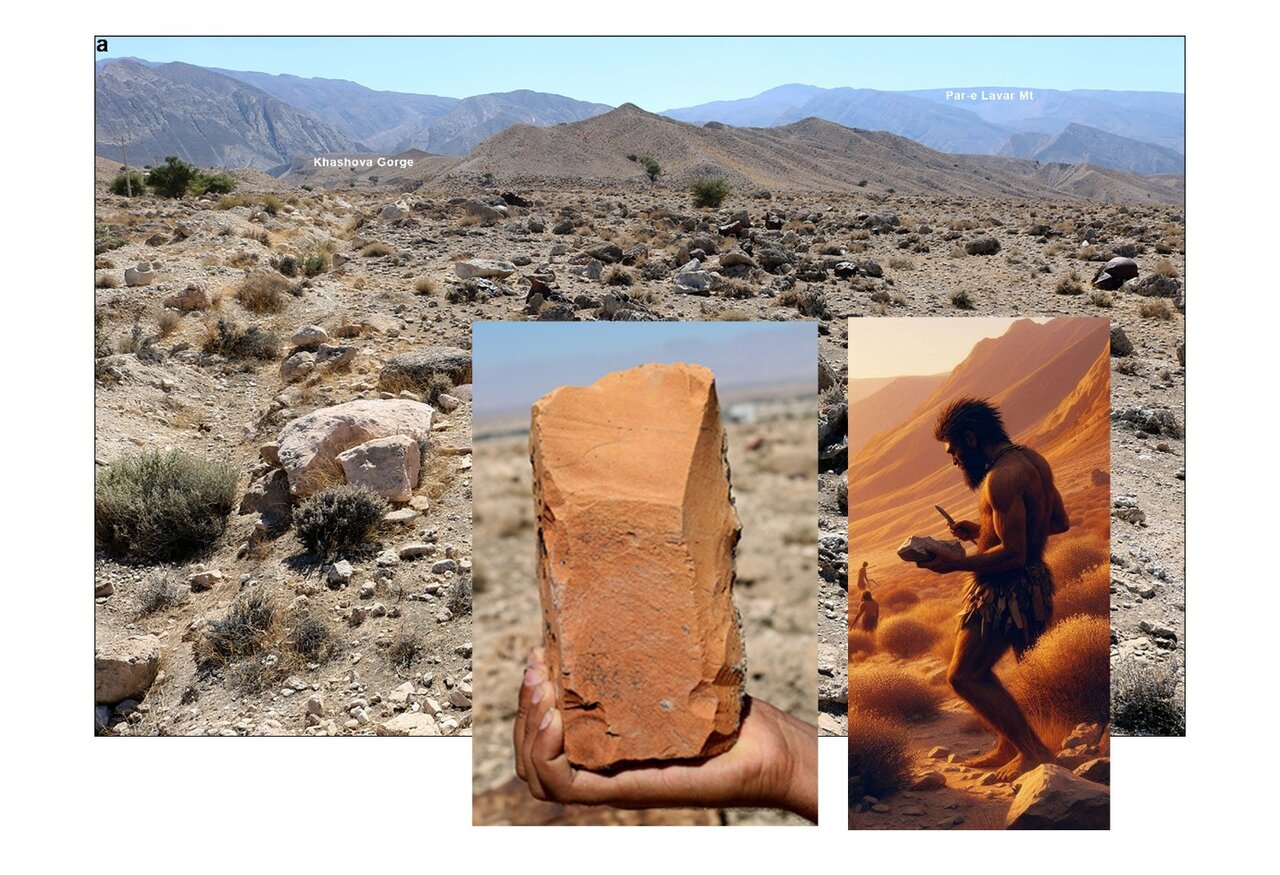Groundbreaking discovery in northern Persian Gulf sheds new light on early human migration

TEHRAN - A major archaeological discovery in the northern hinterlands of the Persian Gulf is transforming our understanding of early human migration into Asia.
The Dehtal site, located in Hormozgan province, southern Iran, has yielded one of the most substantial Acheulean assemblages ever uncovered on the Iranian Plateau, underscoring the region’s significance as a critical corridor for Pleistocene hominin dispersal out of Africa.
Led by archaeologist Sepehr Zarei, the discovery centers on massive stone tools—including giant cores bearing flake scars exceeding 50 centimeters—and a variety of Large Cutting Tools (LCTs), such as handaxes, cleavers, and scrapers. These lithic artifacts, shaped from locally sourced boulders, reflect sophisticated technological strategies employed by Acheulean toolmakers during the Lower to Middle Pleistocene, possibly more than 400,000 years ago.
“The sheer size and complexity of these tools tell us that Dehtal was not a peripheral site—it was a central hub of early hominin occupation and tool production,” said Zarei. “Our findings reveal systematic raw material exploitation and on-site tool manufacturing at a scale rarely seen in this region.”
Situated on an expansive alluvial plain near seasonal water sources and abundant raw materials, Dehtal offered an ideal habitat for early human groups. Its location supports broader theories that access to freshwater and stone resources played a decisive role in hominin settlement patterns during the Pleistocene.

According to Fereidoun Biglari of the National Museum of Iran, who first surveyed and sampled Dehtal in 2010, the implications extend far beyond the site itself:
“The presence of giant core technology at Dehtal, also found across Arabia and the Indian subcontinent, reflects a widespread Acheulean tradition shared across continents,” Biglari noted. “This reinforces the idea that the northern Persian Gulf—once a dry basin during periods of lowered sea level—acted as a land corridor linking the Levant and Arabian Peninsula with South Asia. With its rich lithic record and strategic position, Dehtal becomes a key piece in understanding the Acheulean world and the ancient routes our ancestors followed across this part of Eurasia.”
Intriguingly, some of the Acheulean cores at Dehtal also bear Holocene-period rock art, suggesting later cultural reuse and adding a complex, layered chronology to the site’s significance.
The findings open promising avenues for further research into early hominin behavior, landscape use, and long-distance movement. As sea levels fluctuated throughout the Pleistocene, areas like the Persian Gulf basin may have alternated between migration routes and refugia, potentially hosting human populations for extended periods.
According to Zarei, more intensive systematic surveys and excavations are planned for the site and will be undertaken in 2025–2026.
The results of the Dehtal investigations were recently published in the Journal of the Iran National Museum.
AM
Leave a Comment